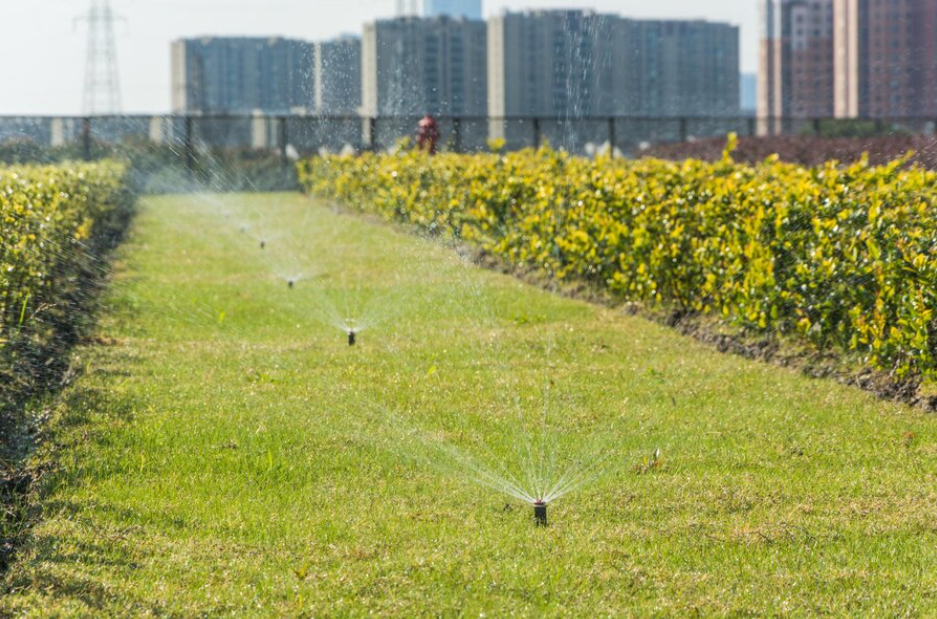
The lawn is often the first thing people see when passing a house, so many homeowners take pride in a pristine lawn. However, creating a lawn that others admire can be challenging sometimes. Various issues can mar the beauty of your outdoor space, from unsightly brown patches to stubborn weeds.
The good news is you don’t have to settle for a mediocre lawn. As long as you have proper knowledge of potential problems and their solutions, you can tackle these common lawn problems effectively. Here are some prevalent issues and solutions to restore your lawn’s vitality.
Table of Contents
Brown Patches and Thinning Grass
Brown patches and thinning grass can be symptomatic of various underlying issues. Compacted soil restricts root growth and inhibits water absorption, leading to patchy or thinning grass. Inadequate watering, whether too much or too little, can stress the grass and cause discoloration. Additionally, fungal diseases like brown patches or dollar spots can thrive in moist conditions, further exacerbating the problem.
To address this, begin by aerating your lawn to alleviate soil compaction and improve air circulation. This process allows water, air, and nutrients to penetrate the soil more effectively, promoting healthy root development.
It’s also important to incorporate proper watering practices, aiming for deep, infrequent watering sessions rather than shallow, frequent ones. Installing an efficient irrigation system from EZ Lawn Sprinklers can streamline this process, ensuring uniform coverage and optimal moisture levels for your grass. They structure our systems to irrigate lawns and gardens independently by dividing the system into different zones and selecting the appropriate sprinkler heads for each area.
Weed Infestation
Weeds are resilient adversaries, capable of thriving in even the most well-tended lawns. Their presence detracts from the aesthetic appeal of your yard and competes with grass for essential resources. Common weeds such as dandelions, crabgrass, and clover can quickly take over if left unchecked.
Combatting weeds requires a multi-faceted approach. Start by manually removing existing weeds, ensuring you extract the entire root system to prevent regrowth. Implementing a regular mowing schedule can also help suppress weed growth by promoting healthy grass density. Consider applying pre-emergent herbicides in early spring to prevent weed seeds from germinating, effectively reducing weed populations over time.
Soil pH Imbalance
Your soil’s pH level profoundly influences nutrient availability to your grass. An imbalance in pH can lead to nutrient deficiencies and hinder grass growth. Conduct a soil test to determine its pH level, aiming for a slightly acidic range between 6.0 and 7.5 for most plant types. If your soil is too acidic, apply lime to raise the pH level gradually. Conversely, if it’s too alkaline, incorporate elemental sulfur to lower the pH.
Insect Infestations
Insects such as grubs, chinch bugs, and armyworms can wreak havoc on your lawn, causing extensive damage to grassroots and foliage. Signs of insect infestation include brown patches that detach easily from the soil and increased bird activity as they feed on the insects.
To combat these pests, consider applying insecticides specifically formulated to target the offending species. Encourage natural predators like birds, nematodes, and predatory insects to help control the insect population.
Integrated Pest Management (IPM) strategies, which combine biological, cultural, and chemical control methods, offer a sustainable approach to managing insect infestations while minimizing environmental impact.
Fungal Diseases
Fungal diseases like powdery mildew, brown patches, and rust can thrive in warm, humid conditions, leading to discolored patches and stunted growth in your lawn. To prevent fungal infections, avoid overwatering your lawn, as excessive moisture creates an ideal breeding ground for fungi. Improve air circulation by pruning overhanging branches and thinning dense vegetation to reduce humidity levels. If fungal diseases persist, treat affected areas with fungicides designed explicitly for lawn use, following the manufacturer’s instructions carefully.
You can also consider using fungicide-resistant grass varieties and practicing proper lawn maintenance to minimize the risk of fungal outbreaks. Regularly removing thatch buildup and ensuring adequate sunlight exposure can also help prevent fungal diseases from taking hold in your lawn.
